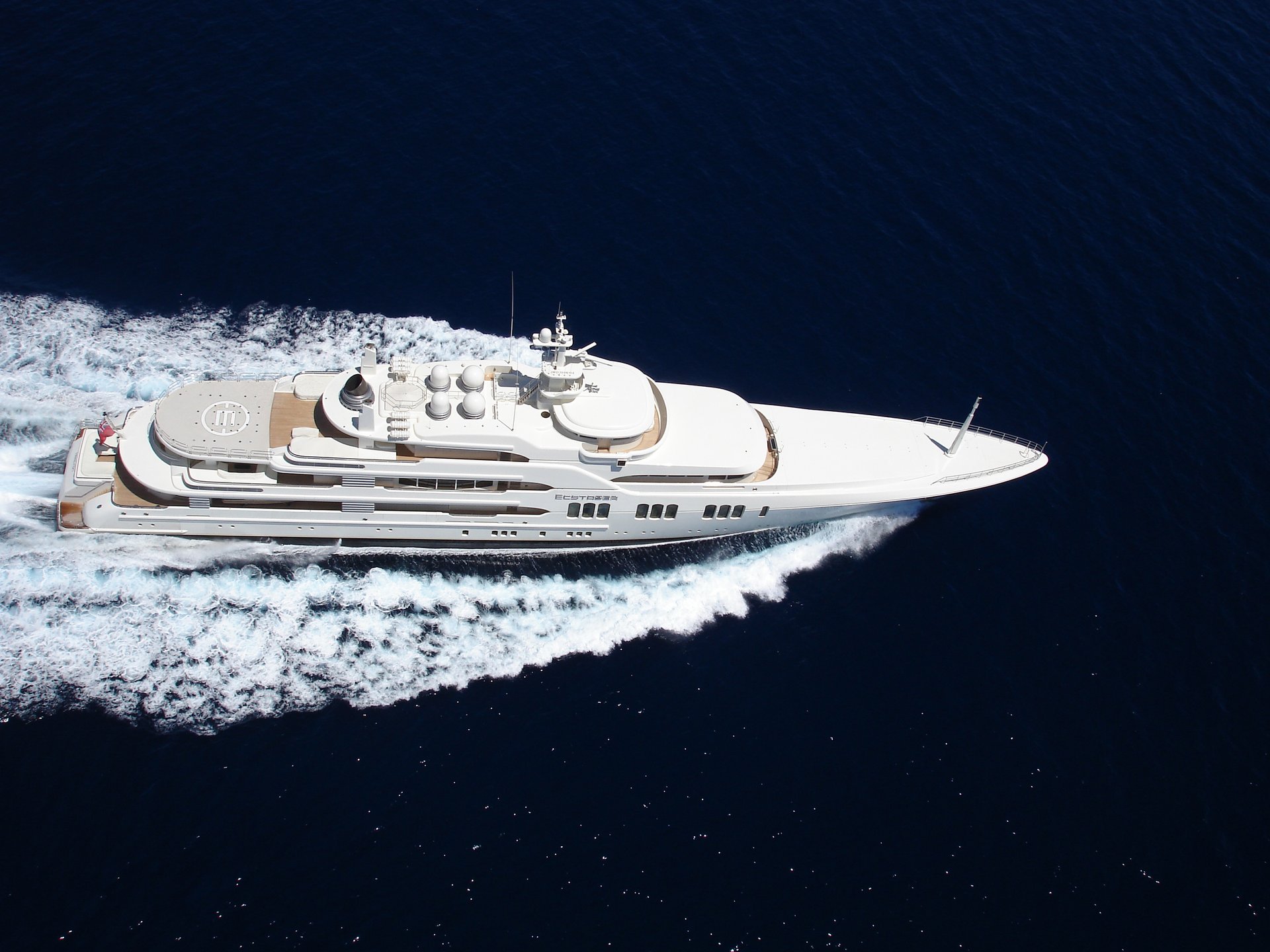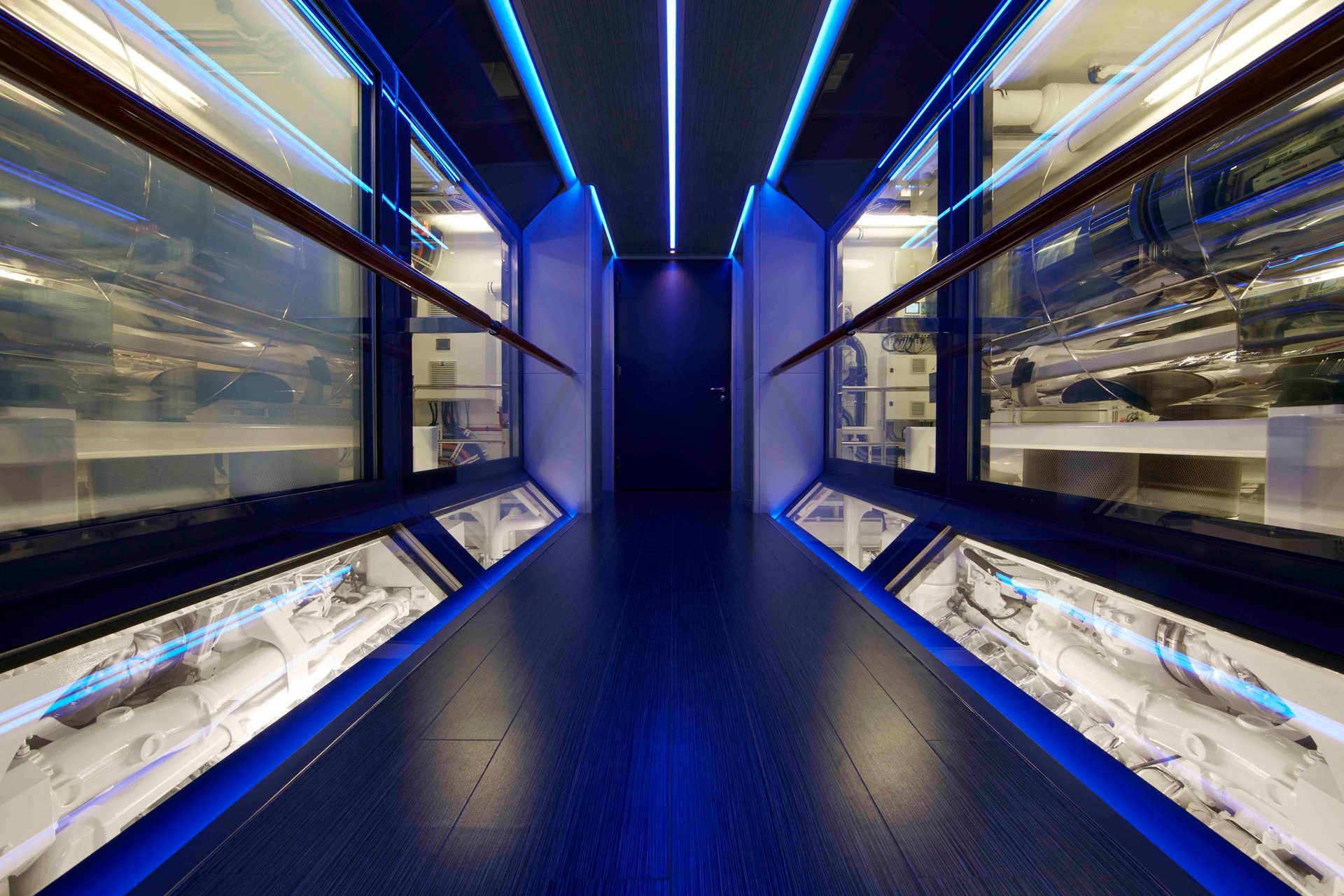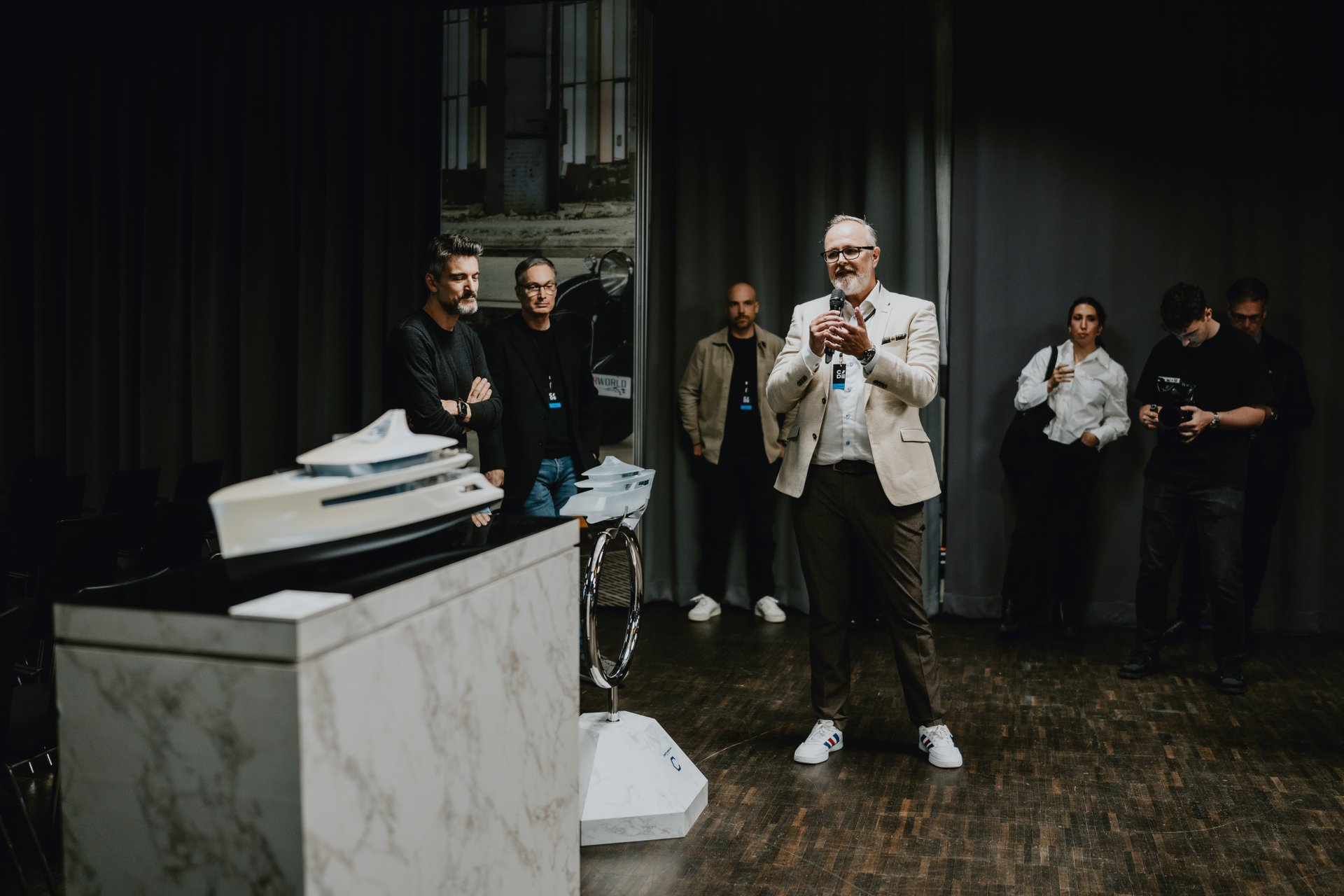How fast should a yacht be able to go? It’s a question that has shaped countless design decisions, from the size of the engine room to the curve of the bow and the balance between comfort and performance. Yet when Feadship’s Knowledge & Innovation (K&I) team examined how owners actually use their yachts, the results were surprising. In reality, few Feadships ever approach their maximum speed.
That simple insight set a new line of thinking in motion: what if future yachts were designed not for theoretical performance, but for real life at sea?


This bow is far more than a styling element alone. Its unconventional shape is designed to slice through the waves and help Predator attain a top speed over 25 knots, an astonishing feat for a yacht of this magnitude.
Efficiency is freedom
Under the guidance of Marc Levadou, the K&I team began to explore this idea in depth. Most modern Feadships already use hybrid diesel-electric propulsion systems that reduce emissions and improve comfort. Feadship is also investing in alternative fuels such as methanol and hydrogen, both promising pathways towards a cleaner future.
Yet these fuels typically have lower energy density, meaning they take yachts less far on the same volume. The solution lies in efficiency—using every unit of energy to its fullest advantage. The more efficiently a yacht moves through the water, the longer she can remain at sea without compromise. The key discovery: top speed and efficiency do not always align. Pushing a yacht beyond 18 knots demands a disproportionate increase in power and fuel.
Designing for everyday use
Traditionally, owners have been asked to specify a top speed at the start of a new-build contract. That number would then influence every major design decision—hull form, propulsion layout, engine size, and the systems needed to support them. It is an approach that made sense in an era when top speed was seen as a defining measure of performance.
The K&I team wanted to test another approach: what if the starting point was how an owner truly uses the yacht? AIS tracking data, collected from Feadship’s active fleet over recent years, provided the evidence. This global monitoring system shows how yachts move, how often they sail, and at what speeds. It paints a remarkably clear picture of real-world behaviour.
What if the starting point was how an owner truly uses the yacht?
Testing the theory
To turn data into insight, K&I collaborated with MARIN, De Voogt Naval Architects, and Studio De Voogt. Together, they analysed two Feadships from the fleet under this new fit for use philosophy.
For the first yacht, the team focused on her bow shape. They explored what would happen if her inclined stem were replaced by a vertical or bulbous design. Although such decisions are often aesthetic, the research showed that the bow form has a tangible effect on efficiency and speed.
The second yacht became a deep-dive into detail. The researchers modelled the fine adjustments that could make her more efficient without changing her essential character. It was a study in balance: keeping everything that defines a Feadship, while refining what happens below the surface.
The outcome was striking. By designing for real-world operation rather than theoretical top speed, efficiency gains of 10 to 15 percent are achievable.
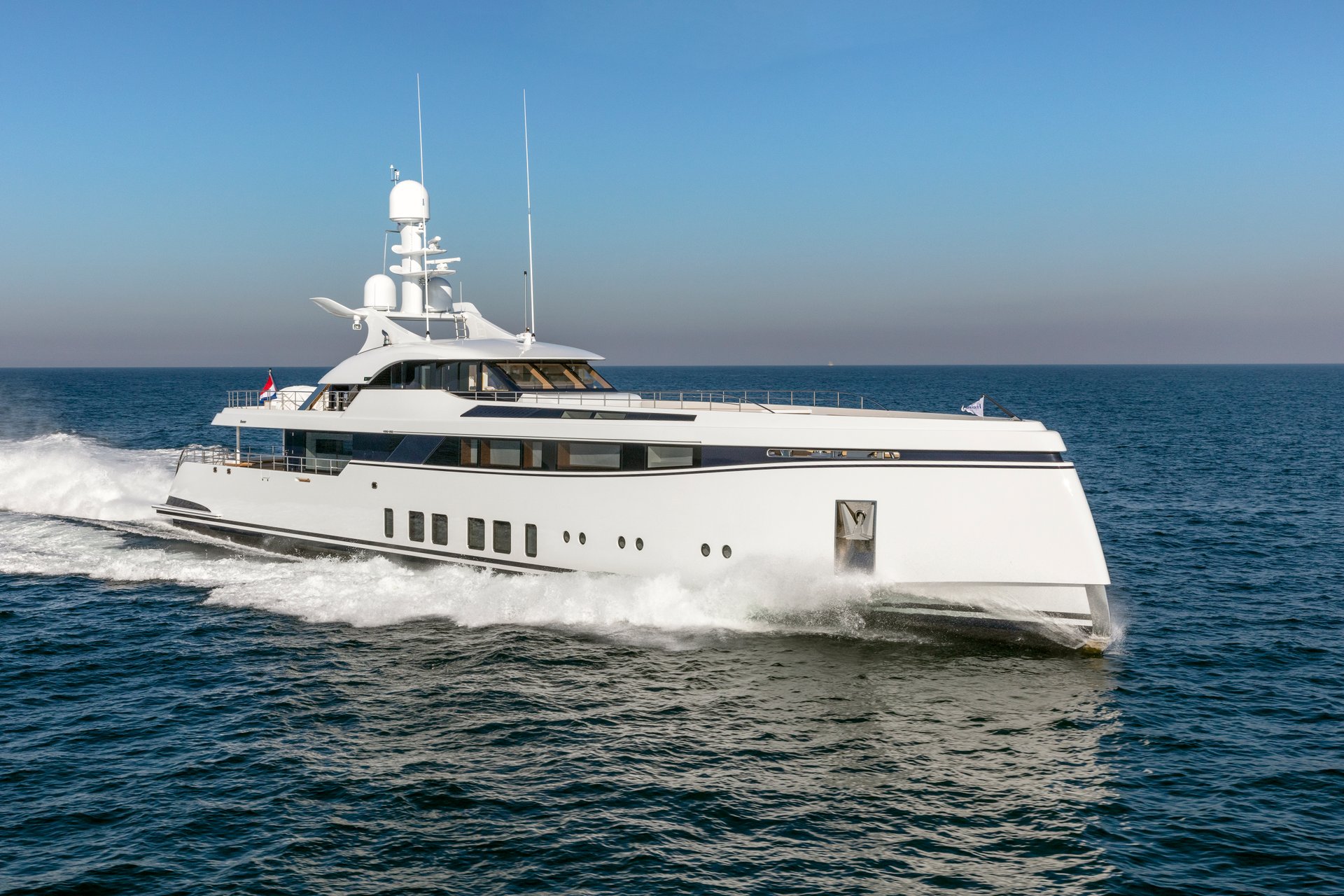

Made entirely of aluminium and subject to an incredibly stringent regime in terms of weight and its distribution, Totally Nuts and her water jet propulsion system can reach the 28-knot mark.
A new conversation
These findings have already started to reshape how Feadship speaks with clients. Instead of beginning with a maximum speed, conversations now focus on the owner’s lifestyle, cruising patterns and preferred destinations. For returning clients, Feadship can even show performance data from their existing yacht and propose how a new design might optimise her range, comfort and energy use.
It’s a subtle but meaningful shift—from designing for specification to designing for experience. As Marc's team put it, "the goal is not simply to make yachts faster, but to make them smarter, more sustainable and better suited to how their owners actually enjoy them."
And perhaps, one day, you might step aboard a new Feadship and notice something intriguing: she’s the same size as your previous yacht, but her engines are smaller, quieter and more efficient. She glides further, stays out longer and uses her energy more wisely. That’s not slower. That’s progress.
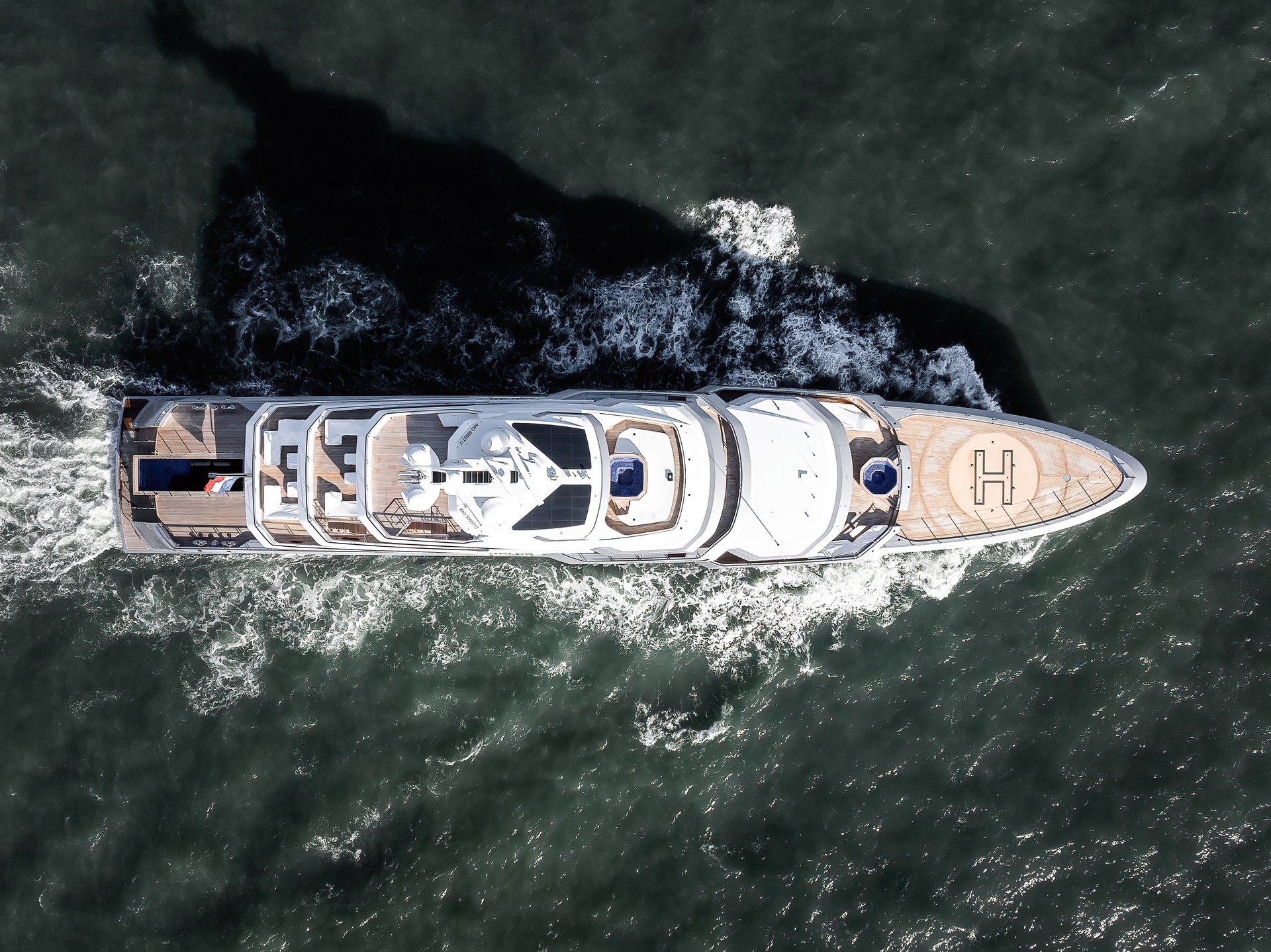

The average cruising speed of a Feadship is typically between 12 and 16 knots, depending on the yacht and her purpose. Some newer designs cruise a little faster, while others prioritise range and efficiency. Every Feadship is optimised for comfort at sea, not for chasing top speed. Valor has a cruising speed of 11 knots with maximum of over 15 knots.
